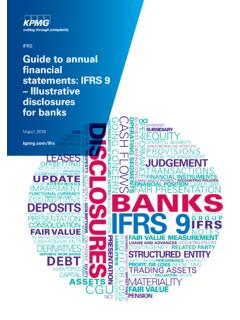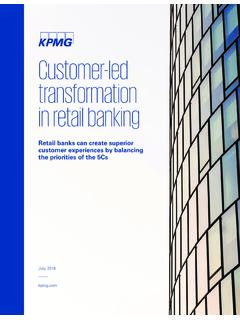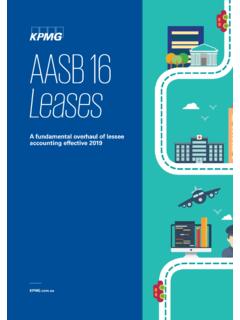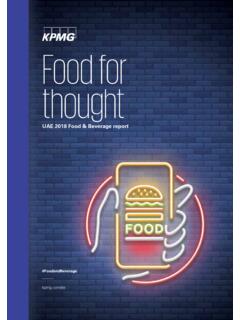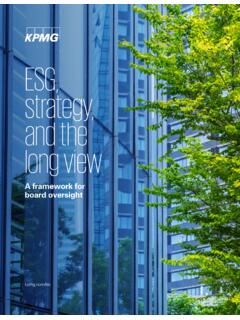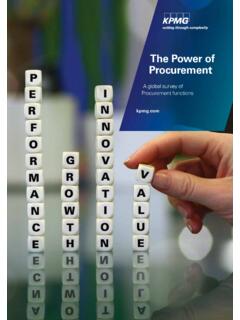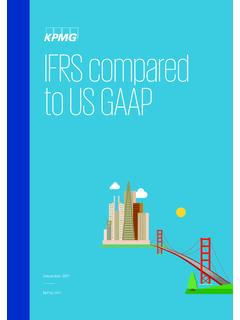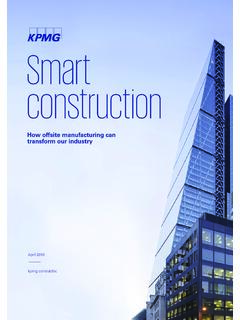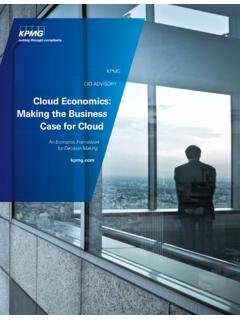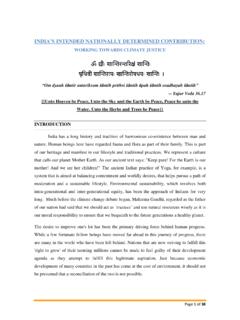Transcription of Mobility 2030: Transforming the mobility landscape
1 Global Strategy GroupKPMG InternationalMobility 2030: Transforming the Mobility landscapeHow consumers and businesses can seize the benefits of the Mobility revolutionThriving on disruption seriesMobility is undergoing one of the most transformational social, technological and economic shifts of a generation, shaped by three key disruptive forces: electric vehicles and alternative powertrains, connected and autonomous vehicles and on demand Mobility services. Sectors are being disrupted, with new markets emerging, while others are converging, and some are disappearing entirely. The winners are likely to be those that can truly understand the impact and timing of disruption, and seize the right emerging opportunities. This means swiftly adapting business and operating models and securing the right partnerships and acquisition SimpsonKPMG in the UKEdwin KempKPMG in the UKEdward AtaiiKPMG in the UKYuan ZhangKPMG in the UKThe future Mobility ecosystem Three cross sector megatrends are fundamentally reshaping Mobility for consumers and businesses.
2 The automotive, transport and wider Mobility market is undergoing a transformational social, technological and economic shift, fundamentally changing the way people and products are moved. Many sectors, beyond automotive and transport, are being disrupted, with new markets emerging, existing ones converging, and others declining and possibly vanishing. New entrants and startups are challenging incumbents, who in turn look to leverage their experience and resources to build sustainable market positions. Amidst continued population growth, urbanization and environmental concerns, new forms of Mobility are critical to support tomorrow s population hubs and economic activity. Today s Mobility systems suffer from congestion, ineffciency, accidents and high prices.
3 But the future promises convenient, safe and economic Mobility , with less impact to health and the environment. Mobility transformation is fueled by three key technology driven disruptive trends: electrifcation of vehicles (EVs) and alternative powertrains, connected and autonomous vehicles (CAVs) and Mobility as a Service (MaaS). Taken independently, each would signifcantly disrupt the ecosystem; but in combination, they should drive unprecedented change. These advances are set to replace our current vehicle centric system with ess ecosystem with amlessly transition between of transport, with dynamic a radically more effcient, data enabled and driverlconsumers at its heart. Users would be able to sepublic, private, on demand and scheduled modes travel information enabling mid journey changes.
4 As the Mobility ecosystem evolves, its global valuthan US$1 trillion by e is forecast to grow to more 2019 KPMG International Cooperative ( KPMG International ). KPMG International provides no client services and is a Swiss entity with which the independent member firms of the KPMG network are affiliated. All rights Mobility 2030 3 Mobility 2030 2019 KPMG International Cooperative ( KPMG International ). KPMG International provides no client services and is a Swiss entity with which the independent member firms of the KPMG network are affiliated. All rights vehicles and alternative powertrainsMobility value chainConnected and autonomous vehiclesChanging customer and societal demandsMoving peopleMoving goodsMobility-as- a-ServiceCollaboration in the future Mobility ecosystem At the same time, value will also shift and we expect to see different business models emerging.
5 For example, with OEMs we see two dominant archetypes: Metalsmiths manufacturing ever more sophisticated hardware ( vehicles), alongside a new archetype, the Gridmaster . The latter would manufacture vehicles, but also provide a platform for a variety of value adding customer services. As with all disruptive change, we expect there to be clear winners and , the roll out could vary significantly at both a country and city level depending on degree of urbanization, household choice, existing options, infrastructure, and of course, local policies. Government support significantly influences all three disruptive trends. It also impacts the shape and pace of development of the new a private sector perspective, we believe change will not be driven by any one company or sector.
6 Instead it requires unprecedented collaboration, to develop the right Mobility solutions. A fast shifting ecosystem calls for swift decisions on changes to business and operating models, partnerships and the following pages we look at the evolving Mobility landscape in greater detail, considering each of the three technology driven disruptive trends in terms of timing, impact and implications for market participants. 2019 KPMG International Cooperative ( KPMG International ). KPMG International provides no client services and is a Swiss entity with which the independent member firms of the KPMG network are affiliated. All rights 2030 Electric vehiclesA promising start, but with the need to the end of 2017, there were more than 3 million electric vehicles Although this is less than 1 percent of the total parc, electrification is undoubtedly at the top of OEMs agendas.
7 With future bans announced for internal combustion engine (ICE) vehicles across much of the developed world, OEMs have little choice but to adapt. Volvo has pledged to manufacture only fully electric or hybrid models by 2019 and it is not alone; almost every major automaker has pledged significant investments in electric technology. Given these trends, OEMs are striving to win the battery technology race and secure access to essential raw a consumer perspective, uptake has varied significantly by country, heavily affected by local policies. For example, the Norwegian government s generous subsidies meant that nearly 40 percent of new passenger vehicle sales were for either battery electric vehicles (BEVs) or plug in hybrid vehicles (PHEVs) in 2017.
8 Similarly, US and China have both offered strong financial incentives, and in combination now make up well over half of the current global EV The UK has also made steady progress, with growth set to accelerate to 2030, by which time EVs could account for 69 percent of passenger car sales and 57 percent of light commercial vehicle (LCV) In its strategy paper The Road to Zero5, the UK government has reaffirmed its proposed 2040 ban on conventional cars, setting a clear direction and aligning itself with similar commitments in France, China, Norway and India, amongst carScenarios for forecast UK passenger EV growth (% Sales)69%20202020204020402030203069%57%9 4%91%Expected total cost of ownership parity for passenger EVsExpected total cost of ownership parity for LCV EVsScenarios for forecast UK LCV EV growth (% Sales)7 LCVKey Core scenario (BEV/PHEV Sales %) High/Low scenario variationKey Core scenario (BEV/PHEV Sales %) High/Low scenario variation5 Mobility 2030 2019 KPMG International Cooperative ( KPMG International ).
9 KPMG International provides no client services and is a Swiss entity with which the independent member firms of the KPMG network are affiliated. All rights UK government s environmental and health policies are arguably the biggest catalyst for consumers going electric. These include higher vehicle excise duty (VED) on diesel cars, continuation of the plug in car grant and London s T charge (emissions surcharge) zone all introduced in 2017. Such incentives will complement the roll out of the supporting charging infrastructure, rising consumer awareness, and reductions in total cost of ownership (TCO), which is expected to achieve parity with ICE by the economics for LCVs are even more compelling, thanks to fleet scale economies and high utilization, which should bring TCO parity earlier than for passenger vehicles.
10 The acute price and TCO sensitivity of LCV has the potential to make this sector a leader in EV adoption; however, a lack of sufficient viable models on the market means that adoption currently lags behind that of passenger vehicles. Heavier commercial vehicles, on the other hand, may take considerably longer to go electric, due to the large battery sizes required for long distance haulage and the time taken to charge. Alternative fuels such as natural gas and hydrogen remain realistic take up may have gathered momentum, but requires a number of societal and behavioral changes to become truly widespread, with three key barriers remaining:1. TCO: Achieving TCO parity with ICE vehicles will be critical for EV adoption. In the absence of further government incentives, we expect this to occur around 2020 for LCVs, with passenger vehicles to follow soon after, driven by a number of developments: Falling battery pack costs: the cost of battery packs which typically account for 40 percent of the cost of an entire EV has declined by over 70 per cent8 in the past 7 years and is expected to further halve by 2030 due to technological developments (such as cell chemistry) and production scale economies.
